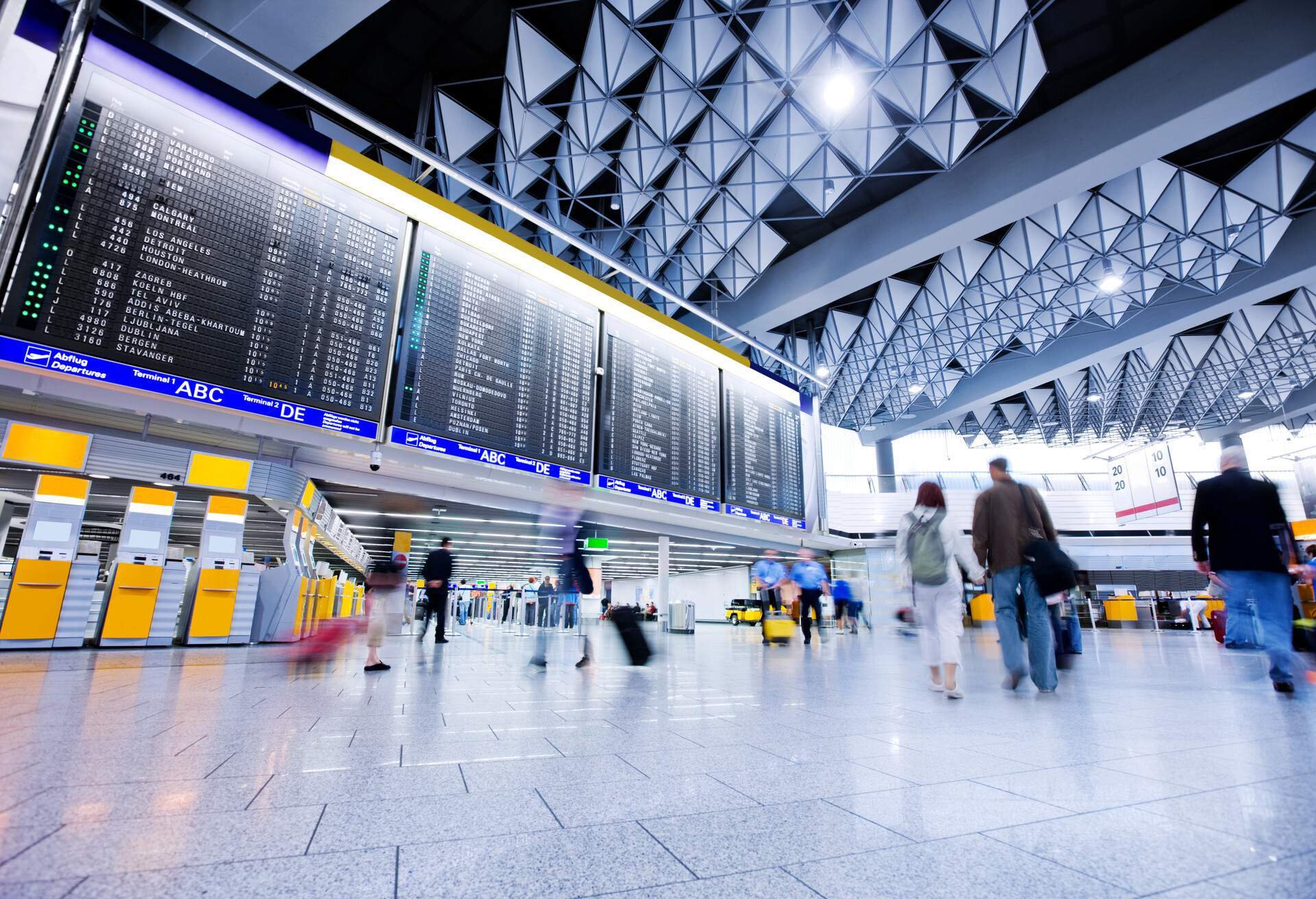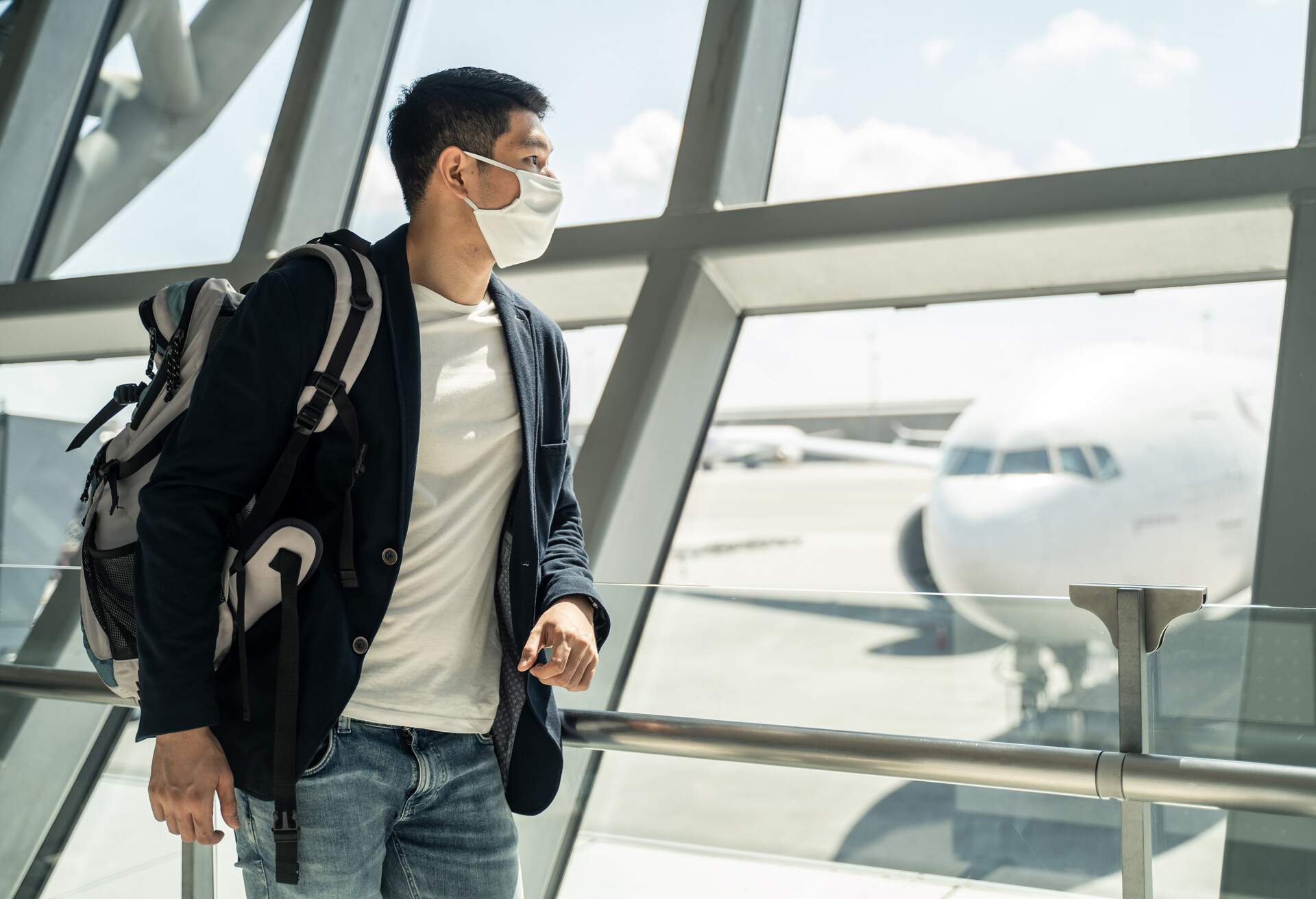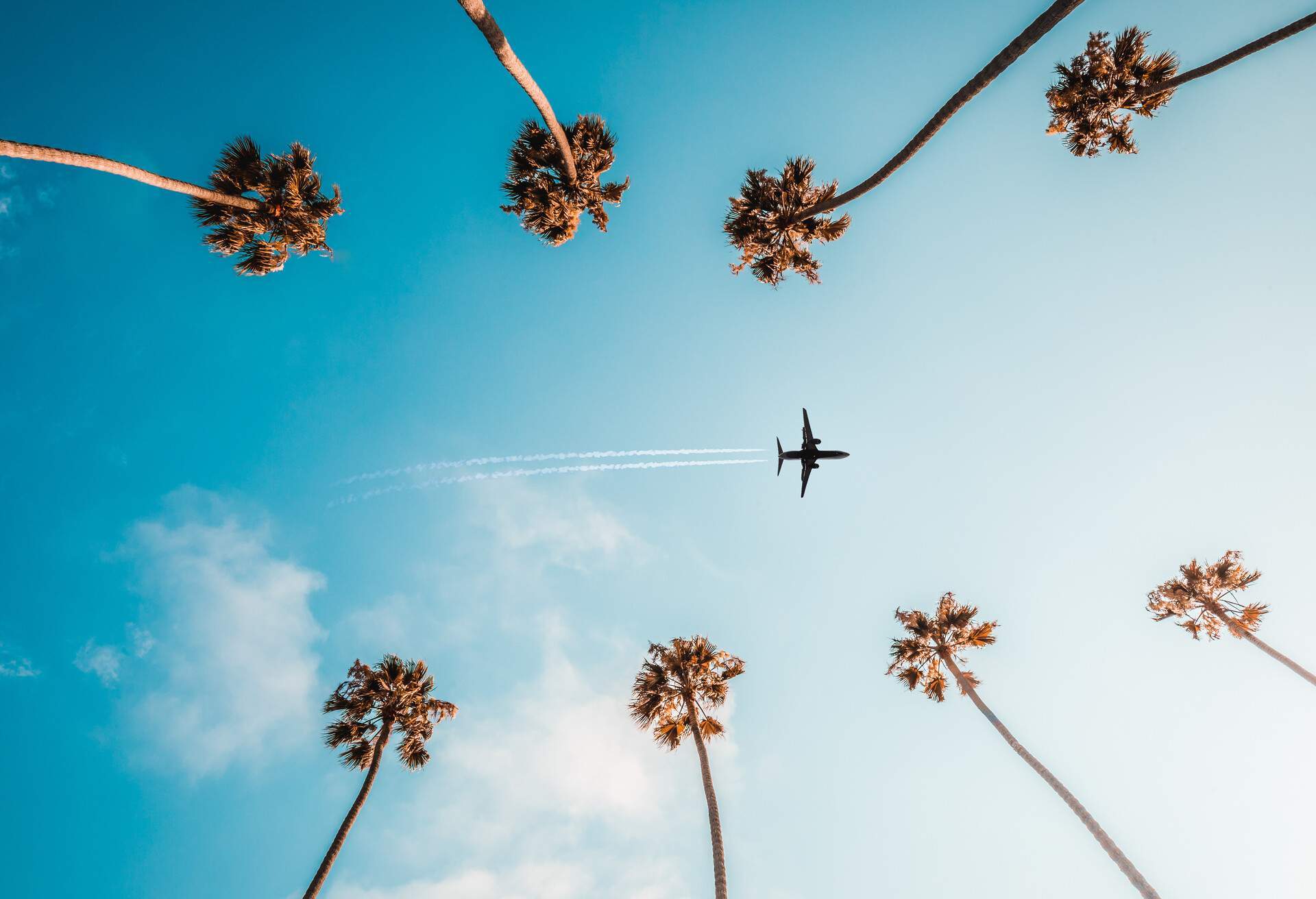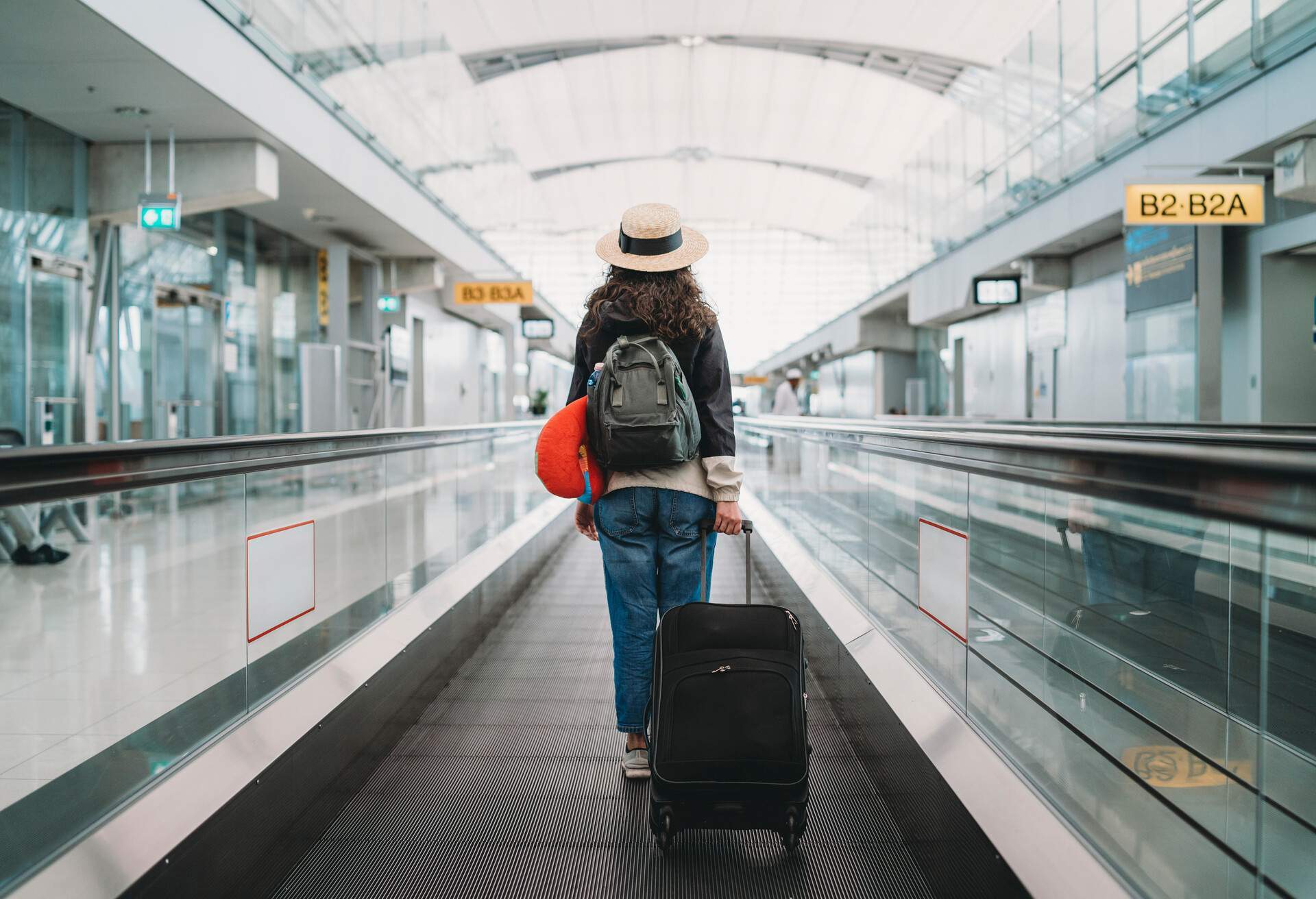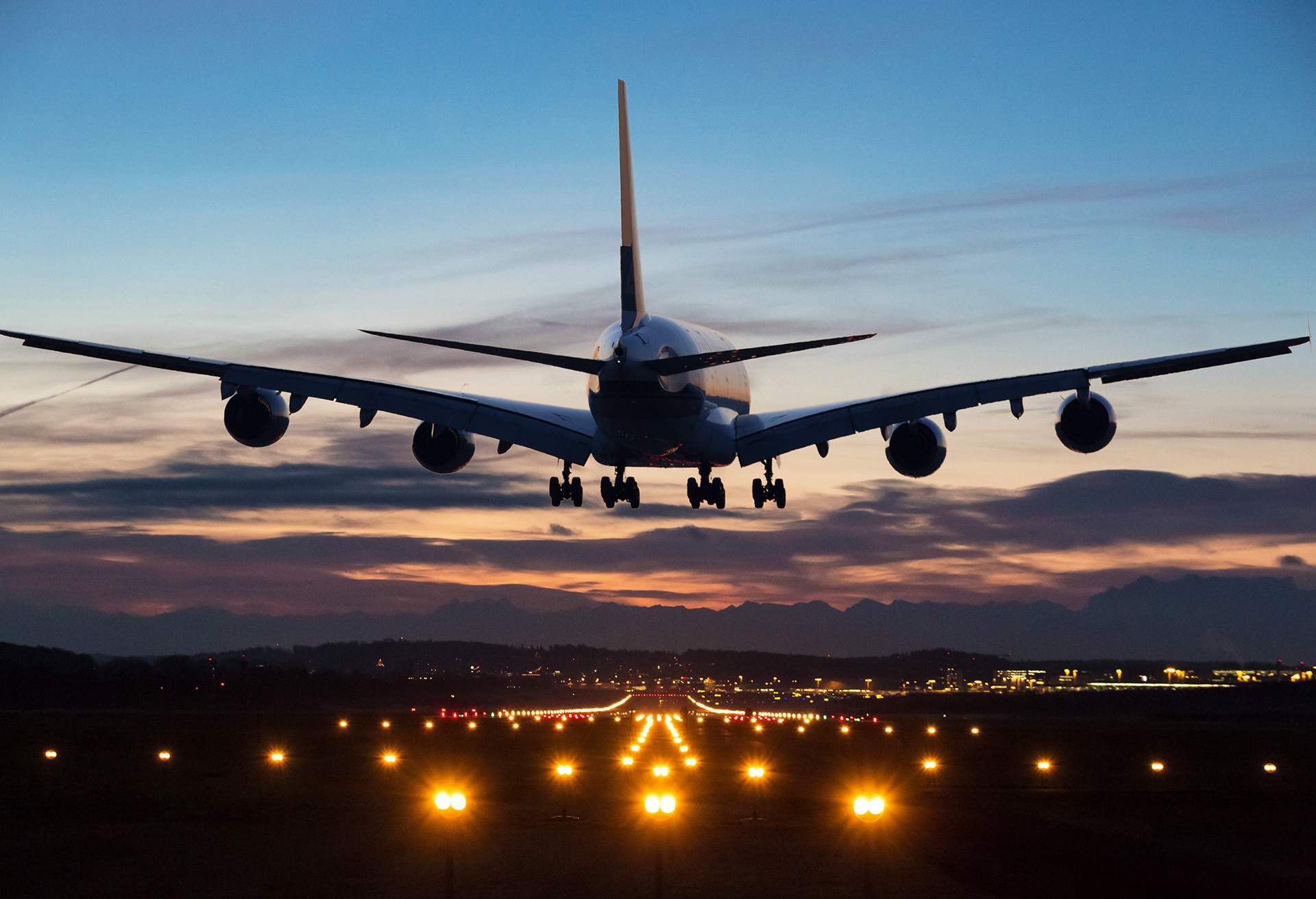Even if you fly regularly, it’s not uncommon to feel unsure about how early to get to the airport. Most airlines provide a general recommendation that gives the average passenger plenty of time, but these are often unnecessarily long.
The cynical among us may think the airlines are in cahoots with the airports. Arrive four hours before your flight and you’ve got little to do except spend money in the shops and cafes. But there are still plenty of factors to consider before setting your arrival time.
Are you flying domestic or international, short or long haul? Then there are airport logistics, check-in deadlines, time of day and year, and the needs of your travel buddies. It all impacts how early you should arrive at the airport. Once you’ve downloaded the KAYAK mobile app and organised the fun parts of your getaway with KAYAK Trips, here’s what you need to consider.
Best airport arrival times for different flight types
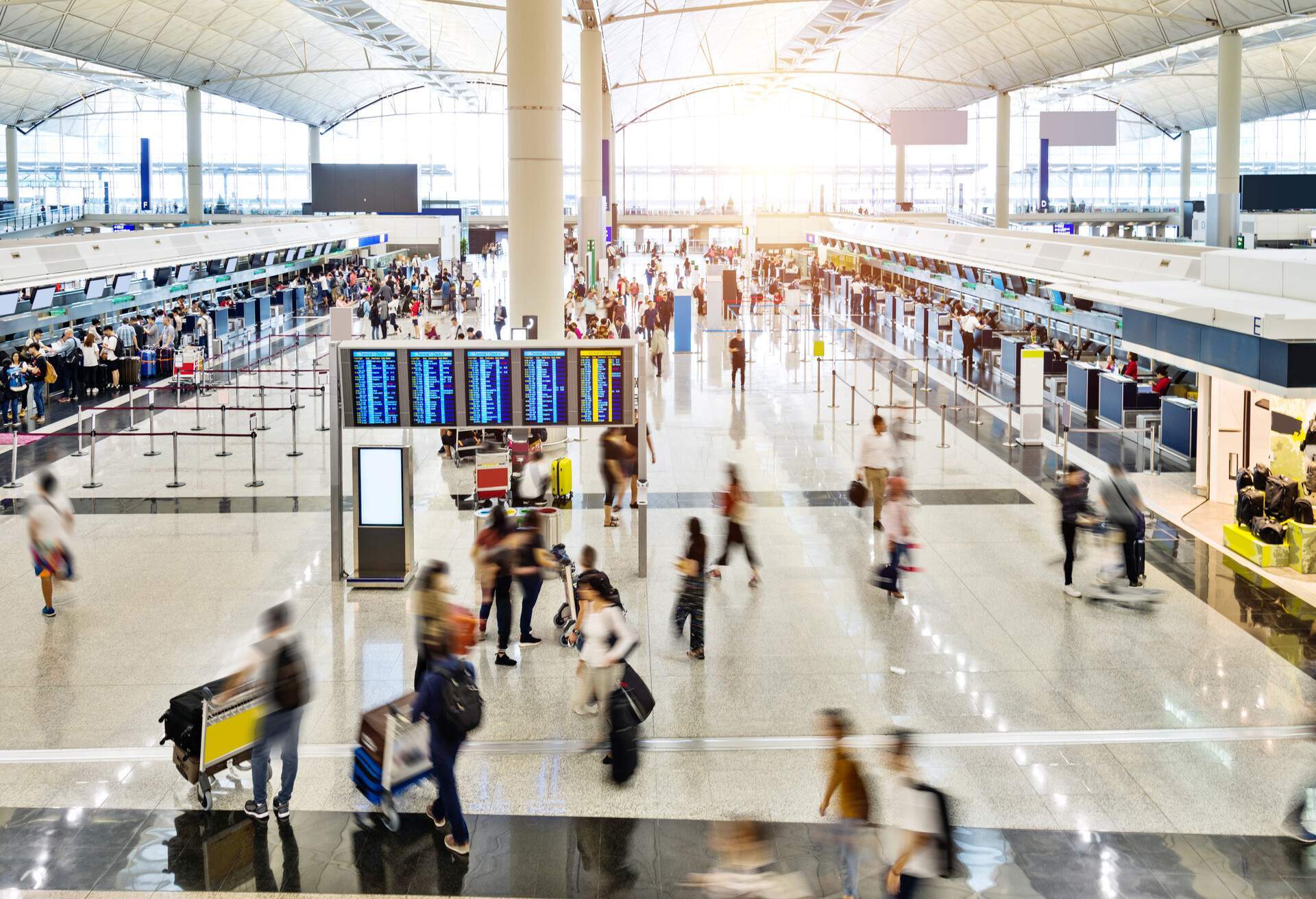
As a committed hand luggage-only traveller, I tend not to distinguish too much between flying short and long-haul. Especially when it comes to deciding how long before a flight I should get to the airport. If you’re a checked luggage flyer though, it can make a significant difference, especially in terms of check-in and bag drop opening and closing times.
How early to arrive for short-haul flights?
Short haul typically means flights shorter than three hours, which from the UK covers most of Europe. Typically the advice for short-haul international flyers is to get to the airport at least two hours before your flight. If you’ve already checked in and are flying with hand luggage only, 90 minutes should also be enough. If you’re checking in or dropping bags at the airport, you may want to arrive half an hour earlier. This is especially true at peak times.
How early to arrive for long-haul flights?
Anything longer than three hours and you’re in long-haul flight territory. That could be a hop across the pond to New York or a marathon journey to Sydney on the other side of the world. (Though I prefer Melbourne, personally.) Coincidentally, three hours is also the recommended gap you should leave between arriving at check-in and your flight departing. The added hour is because long-haul flights usually mean bigger planes, more passengers and more luggage. That translates to longer queues, more admin, and more chances of delays.
How early to arrive for domestic flights?
If you’re flying domestically, arriving 90 minutes before your flight should be early enough. Domestic flights typically fly into and out of smaller airports that transit fewer passengers, so are often faster to navigate. This is especially true if you’re travelling light–hand luggage for a weekend away or just a laptop for a there-and-back business trip.
If you’re flying from one of the major airports, it’s wise to increase that time to two hours, just to be on the safe side. Similarly, if you’re checking in luggage or have kids with you, it’s always wise to allow a little longer. Alternatively, of course, you could consider catching a train or even renting a car instead. It can be quicker, cheaper and, sometimes, more convenient than flying!
How early to arrive for international flights?
The standard airline recommendation for international travel is to arrive at the airport three hours before your scheduled departure. This should cover every step of the airport process, from bag check-in to passport control, and security to boarding on time. More accurately, three hours is for long-haul international flights. If you’re flying internationally within Europe, arriving two hours before should be early enough.
How long before a flight should you get to the airport in the UK?
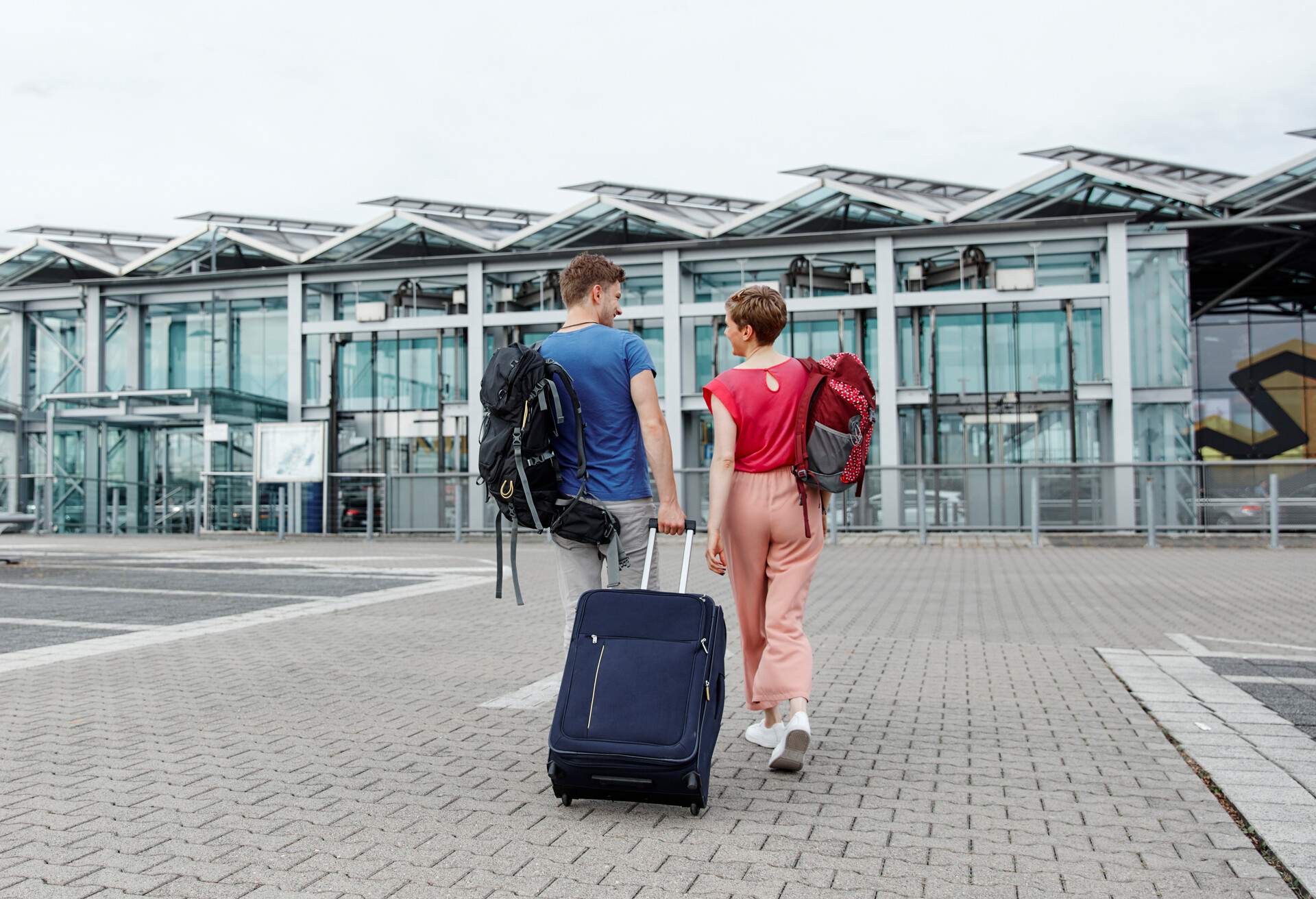
Airports are not all created equal. For every huge, sprawling Heathrow Airport, there’s a tiny London City Airport. But when it comes to navigating their twisting queues and endless corridors before a flight, bigger is seldom better.
Again, your airline will have an opinion on this and will let you know how early you should get to the airport. And you should heed their advice to be absolutely safe. Just in case, here’s my advice for the UK’s three busiest airports.
London Heathrow – LHR
Europe’s busiest airport is a monster. Four terminals, thousands of passengers trying to navigate its check-ins, security and gates, often located a long hike away. If you’re flying long-haul, Heathrow recommends getting to check-in at least three hours before your flight. If it’s domestic or within Europe, two hours should be fine.
These times err on the side of caution but are about right if you’re checking in and dropping bags at the airport. Heathrow, with its snaking check-in and bag drop queues a particular bottleneck, is a time-consuming airport to navigate. If it’s the holiday season, they’re the minimum time you’ll need.
If you’re only taking hand luggage and have checked in online in advance so you can waltz straight into security, you can knock half an hour off.
London Gatwick – LGW
Not far behind Heathrow in size and scale is Gatwick. Officially it advises passengers flying long-haul and within Europe to arrive at check-in at least three hours before their flight. If you’re flying within the UK and Ireland, check-in typically opens two hours before.
With many airlines, you’ll find even more caution, and several open a full four hours in advance of departure time. This is unnecessary but the most peak traffic times – the start of the school holidays, particularly around Easter, Christmas and the summer. As with Heathrow, if you check in online and carry only hand luggage, you can reduce those times by half an hour at least.
Manchester Airport – MAN
The UK’s third biggest airport, Manchester, serves the northern half of the UK. While busy, it’s not on the size or scale of London’s two main travel hubs. That doesn’t stop it from towing the standard ‘arrive at least three hours before your flight’ line though.
Airlines can be less fixated on such cautious times, although many open check-in and bag drops three or four hours before departure times anyway. Some, like budget operator Jet2, advise arriving just 90 minutes in advance if you’re checking in online with only hand luggage.
Things to consider to save time at the airport
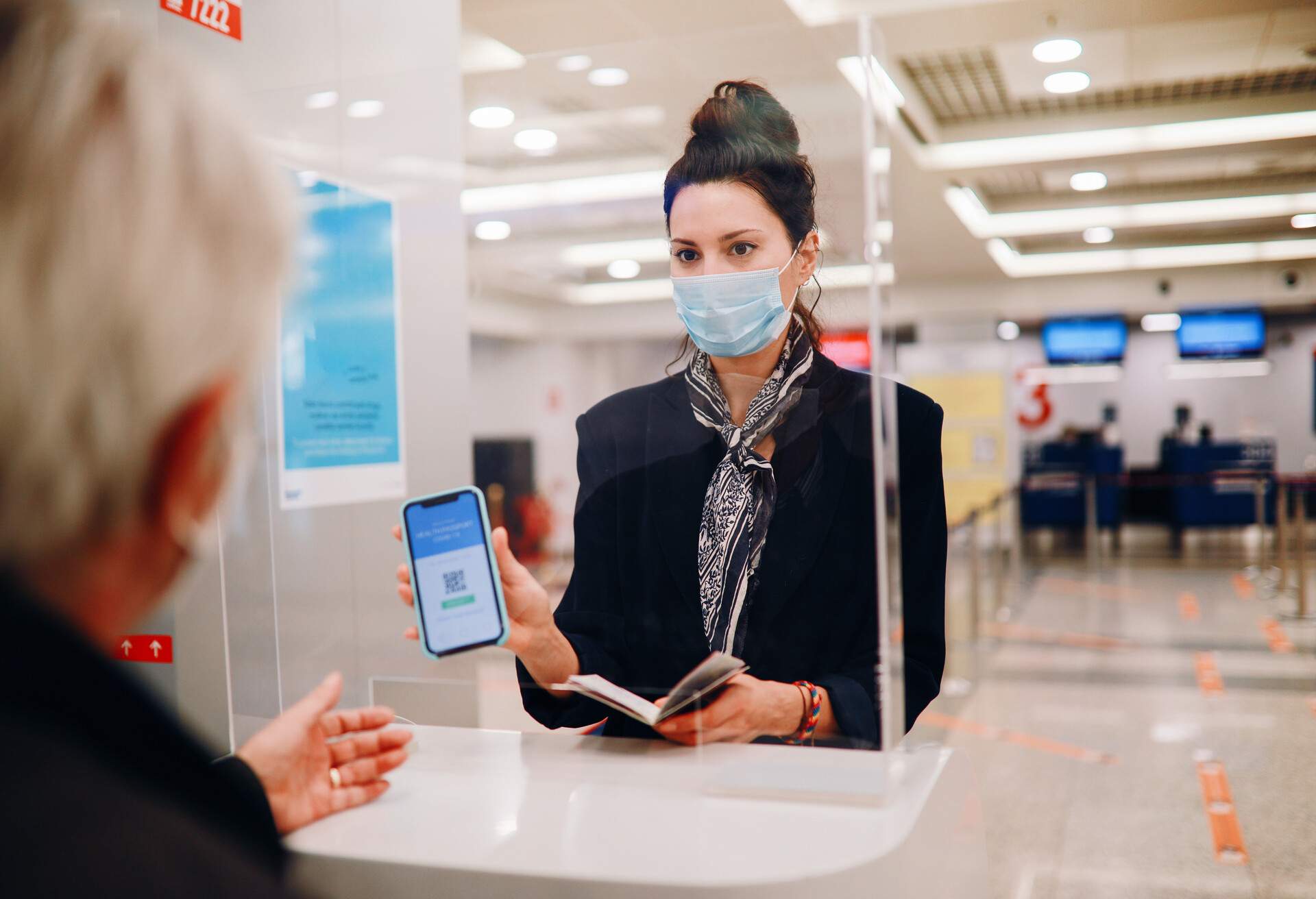
Regardless of airport size, certain times of year are busier at nearly all airports. If you’re travelling around any holidays, expect bigger queues at every step of the process. The same is true for summer travel in general, with many families taking group holidays.
This is only one of the only factors that may require more time than airlines typically recommend, so don’t be afraid to add extra time if this is when you’re travelling. Year-round, Monday mornings and Friday afternoons also see more business travel than the rest of the week, but standard airline recommendations should cover this.
How long does it take to get to the airport?
Before you calculate how much time you need at the airport, find out how long it takes to get there. Forgetting to factor in accurate travel time to the airport can offset your plan for arriving early. Worst-case scenario, it can also cause you to miss your flight, wreaking havoc on your entire trip.
Even before arriving, I like to monitor my plane with the KAYAK Flight Tracker to be aware of potential delays. If your flight is delayed, you still need to be checked in with bags dropped before your originally scheduled departure time.
How big is the airport?
If you’re flying out of a major hub like Heathrow or Gatwick, give yourself extra time. Their size, scope and popularity mean you could be queuing up with hundreds of other passengers. And even after you’ve cleared check-in and security lines, it may take some time to reach your gate. Some airline terminals are so long and crowded that it can easily take 20 to 30 minutes to walk from one end to the other.
If your origin airport is smaller or limited in destinations, like Bristol Airport or East Midlands Airport, you can usually count on less time spent queuing. No matter how big the airport is, it’s always a good idea to find your gate, before shopping or eating. That way, you’ll know how long it will take to return to it.
How busy is the airport?
Certain times of year are notoriously busy at nearly all airports. If you’re travelling during holiday periods, expect longer lines at every step of the process. The same is true for summer travel in general, with many families heading off on holiday en masse. If your trip coincides with such times, factor in a little extra time to be on the safe side.
Year-round, Monday mornings and Friday afternoons also see more business travel than the rest of the week. Standard airline recommended times should cover this though.
Are you flying internationally?
International flights often require extra admin and time. Documentation verification at check-in, additional screening and security checks at the gate, and, in some cases, pre-clearing customs and border control for the destination before departing. All of these are reasons airlines generally add an extra hour to the arrival recommendation for international itineraries.
If you’re flying back into the UK from Europe, many European airports now have separate post-Brexit security checks in place. Travelling within the EU doesn’t require a passport, but it now does for travel to the UK. Airports like Cologne, have a second passport check at the gate, long past security, often with lengthy queues. Don’t get caught out relaxing in the cafés and bars before you check your route to the gate!
What are the baggage check-in cutoff times?
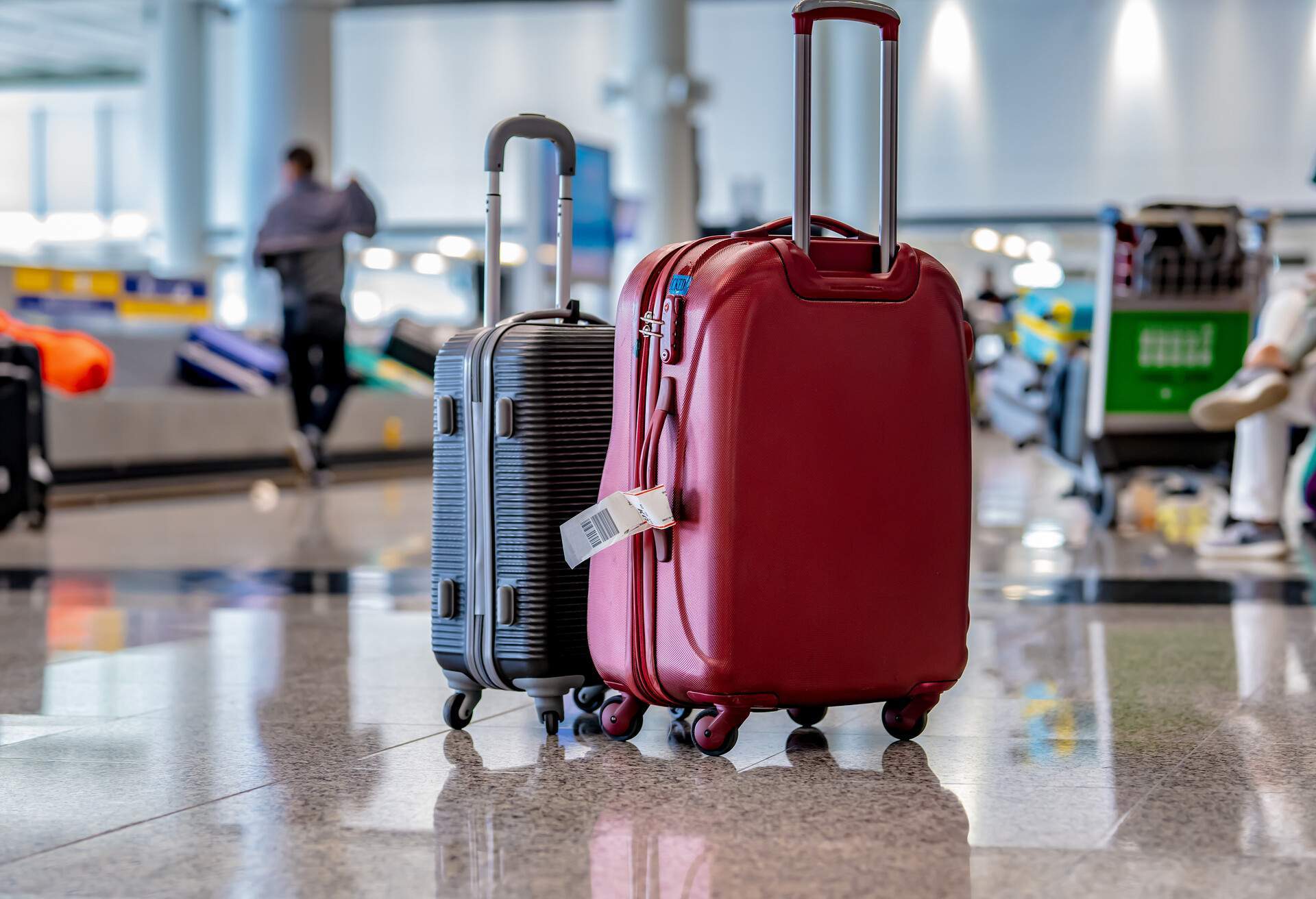
If you don’t have bags to check-in, you can check in online to save time at the airport. This is the single biggest and best way to dramatically reduce your time at the airport – both departing and arriving.
Otherwise, checking in baggage is the biggest consideration in deciding how early to get to the airport. That’s because you’ll need to queue and reach the check-in desk before the airline’s cutoff time. Travelling first or business class will save some time, but if it’s busy there’s no guarantee how much. Carriers and destinations vary but expect bag check-in cutoff times at least 30 and up to 60 minutes before departure. If you’re unsure whether your bag qualifies as hand luggage, check the airline’s rules on size and weight.
How long are the security lines?
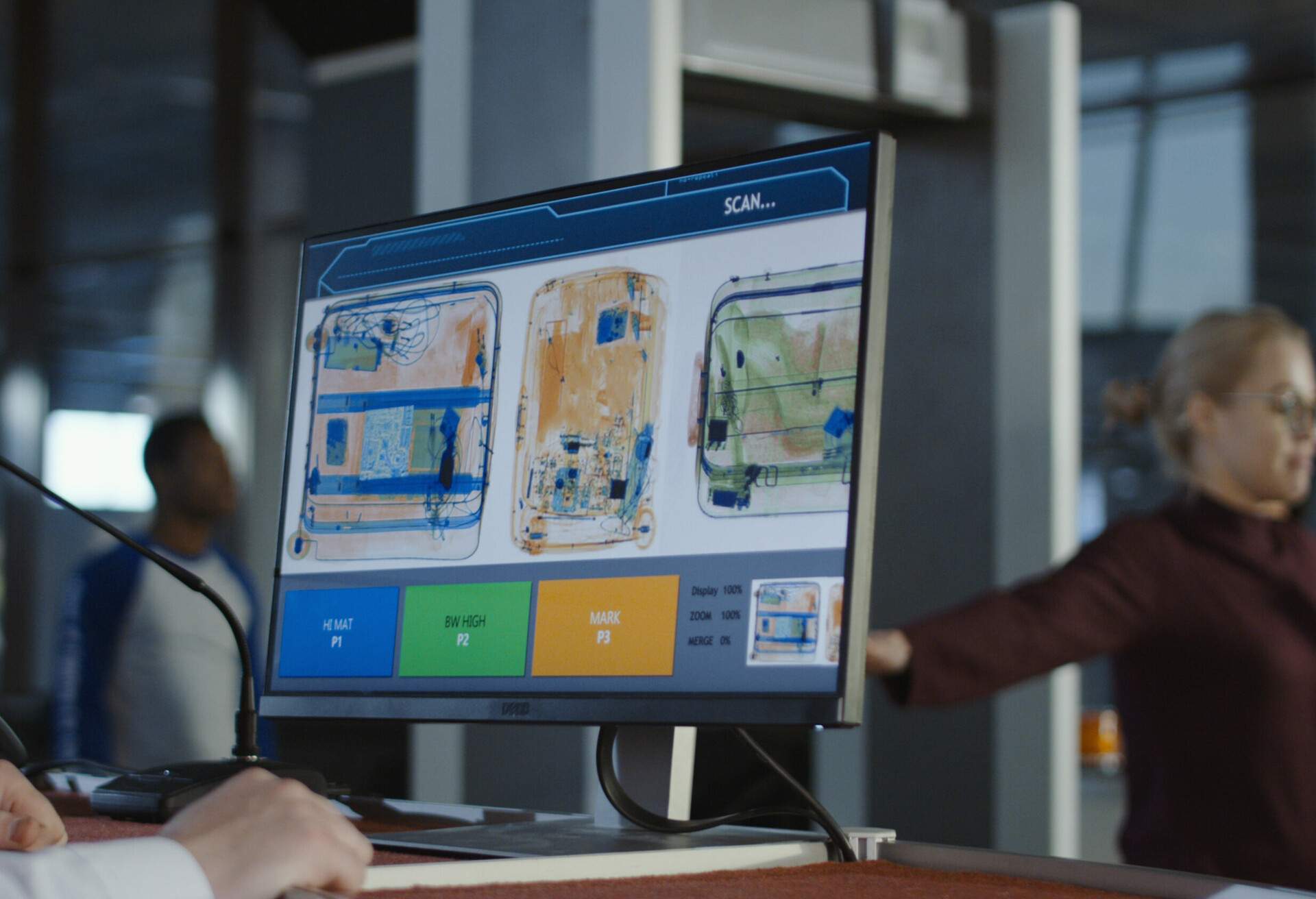
The million dollar question. While it’s impossible to predict with any certainty, one thing is sure – security lines are usually the biggest bottleneck. They’re also why most people stress about how early to get to the airport. That’s even truer if you’re flying from a famously busy or infamously chaotic airport, or if you’re travelling during the holidays.
Still, airline arrival estimates account for most of this. So you shouldn’t need to estimate for more time just because of security unless there are extraordinary delays. Many airports now offer apps to help deal with this. Features that estimate security lines in real time, factoring in how much passenger traffic they expect to see that day, offer some reassurance.
Do you have a security Fast Track?
The other option is to pay for a quicker route through security, although this again comes with no guarantees. Most airlines offer this as an add-on during the booking process, usually called a Fast Track in the UK. Depending on the airport, you can sometimes buy it directly at the security gate too. As a way to reduce stress, I’ve always considered Fast Track passes great value. Usually costing between £8 and £15, it’s a small price to pay for big peace of mind.
This one is pure recreation, not a requirement, so you can always skip it if you’re running behind. But if you want to buy some snacks, a book for the flight, or a souvenir for someone back home, it doesn’t hurt to add an extra 15 minutes to your time budget in case of long queues here, too.
Do you plan to do any airport shopping?
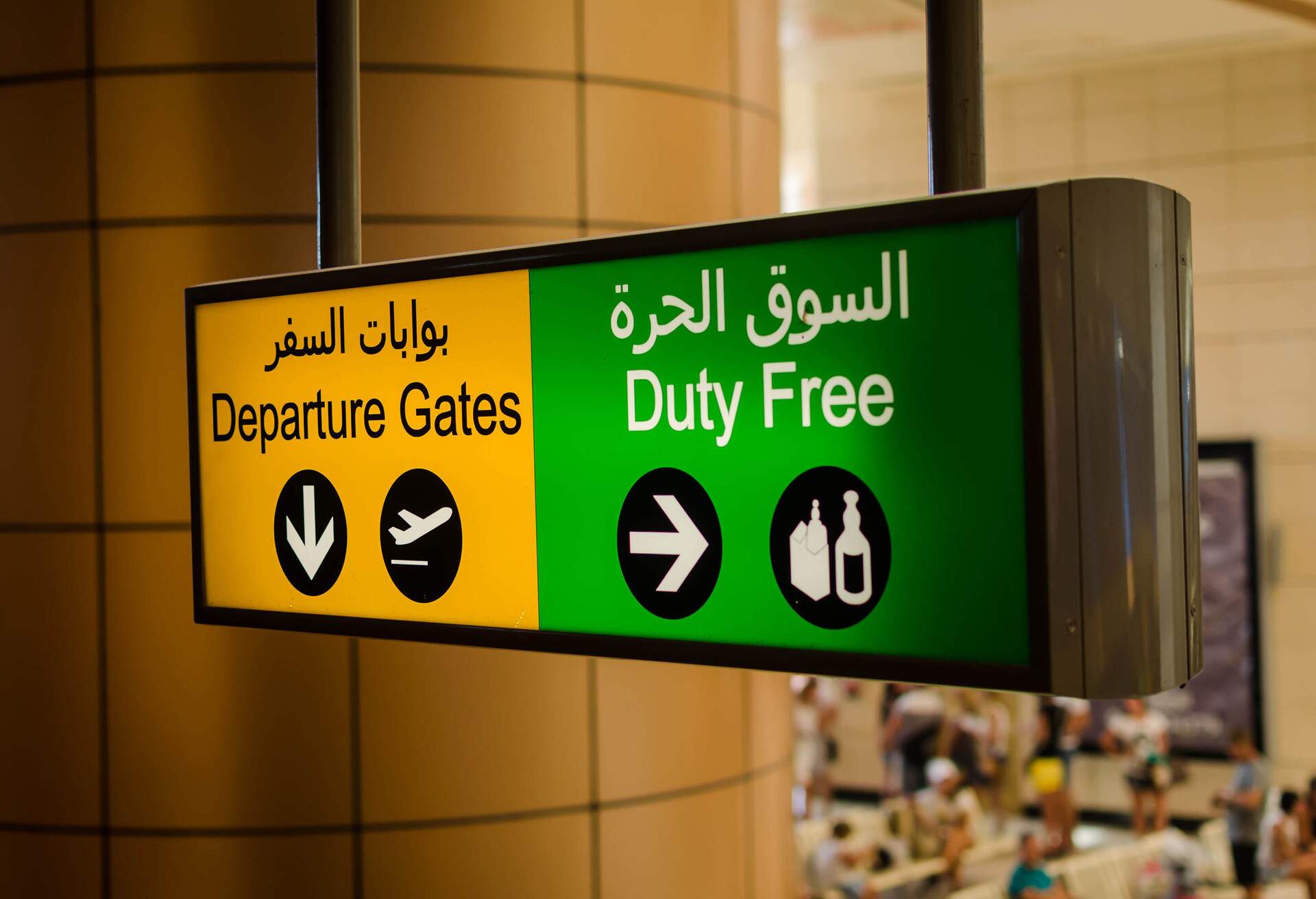
This one is pure recreation, not a requirement, so you can always skip it if you’re running behind. But if you want to eat or have a drink, shop for travel stuff or souvenirs, or pick something up duty-free, don’t forget to cater that time in. Queues can be as long in shops as they are at security.
Don’t forget about the extras
“Aeroplane toilets are great,” said no one, ever. Much more comfortable to use the loos at the airport. You’ll usually find some close to the gate, but make sure you’re back before the boarding cutoff time. Typically that’s at least 15 minutes before departure – but it can be earlier. Budget airlines in particular are renowned for their inflexibility to tardy passengers. If you’re taking the kids, add a few minutes extra.
How was this guide created?
I fly every week, averaging 120 flights per year. As such, I spend more time in airports than most and have become intimately familiar with just about anything that can hold up an airport process. Whether you like to show up at the last possible second or prefer to arrive with plenty of time to sit at the gate, I know how long it takes. I’ve combined this personal knowledge with KAYAK’s tools and expert advice to prepare this guide for you.

